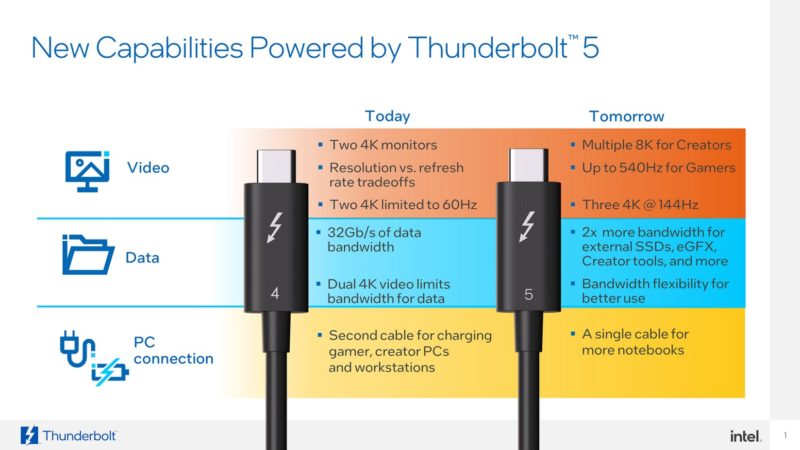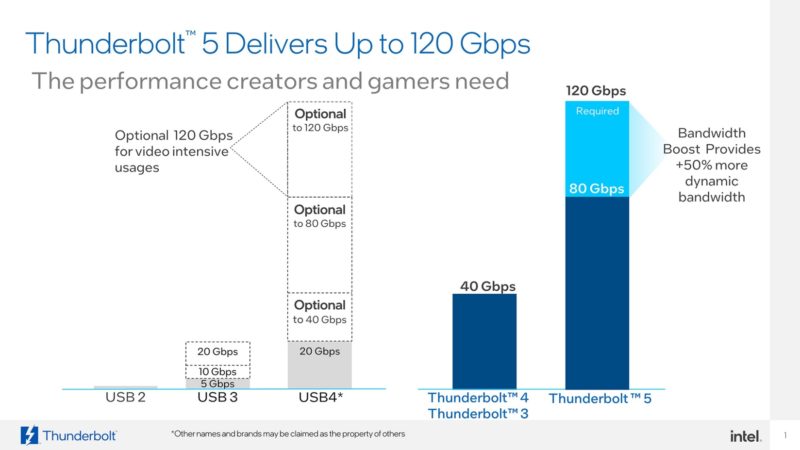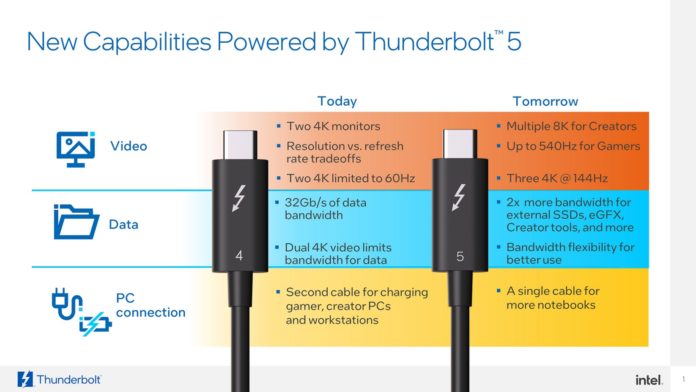Intel announced the specs for Thunderbolt 5 today. The new standard is expected to start making its way into PCs in 2024. With the new standard, we get even more performance for things like displays, external storage, eGPUs, network cards, and more.
Intel Announces Thunderbolt 5 with 80Gbps Connectivity
Thunderbolt 5 will add support for multiple 8K monitors or three 144Hz 4K displays. Here is Intel’s slide on the new standard versus today’s Thunderbolt 4:

Thunderbolt 5 is built upon USB4 V2, DisplayPort 2.1, PCIe Gen4, and more. With each generation, Intel tends to increase the underlying spec support which makes sense.
Intel is showing that while USB4 has a number of optional speeds that are often not implemented in designs, Thunderbolt 5 has a higher required bandwidth figure. Thunderbolt has to provide more bandwidth and features than USB4 since it tends to cost more to implement between controllers and device certifications. That makes this slide very important showing 80Gbps base and a required 120Gbps bandwidth boost.

Intel says that it is planning for passive cables of up to 1m in length using the new controllers. The new Thunderbolt 5 will utilize PAM-3 signaling to achieve speeds of up to 80Gbps plus 50% in bandwidth boost for up to 120Gbps.
Final Words
Thunderbolt 5 will be coming with the new Barlow Ridge (not Intel Optane DC Persistent Memory Barlow Pass) generation of controller in 2024. Thunderbolt has seen a bit of a renewed interest on STH over the past year or so as USB4 has brought Thunderbolt 3 devices like external 10GbE NICs and eGPU chassis to more PCs. Hopefully, with Thunderbolt 5, we will see features like dual 25GbE NICs on Thunderbolt 5 become a reality. Thunderbolt 5 is a tool that system designers can use to maintain smaller system footprints for notebooks or SFF PCs while increasing external connectivity options.




